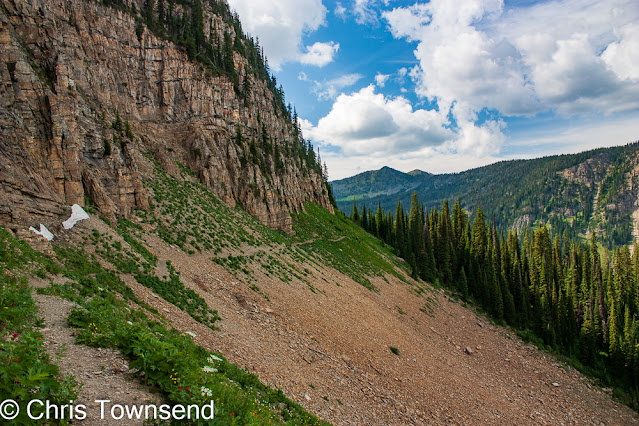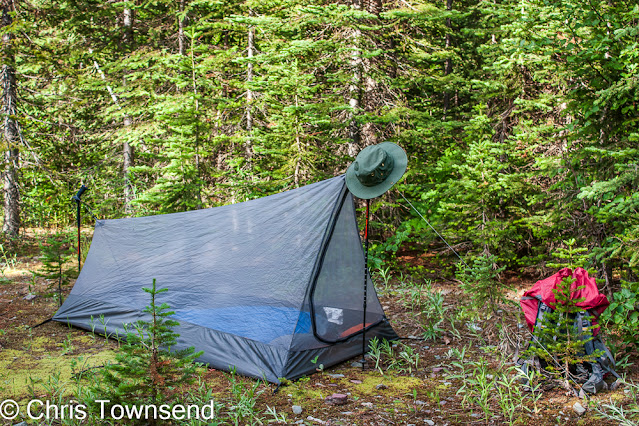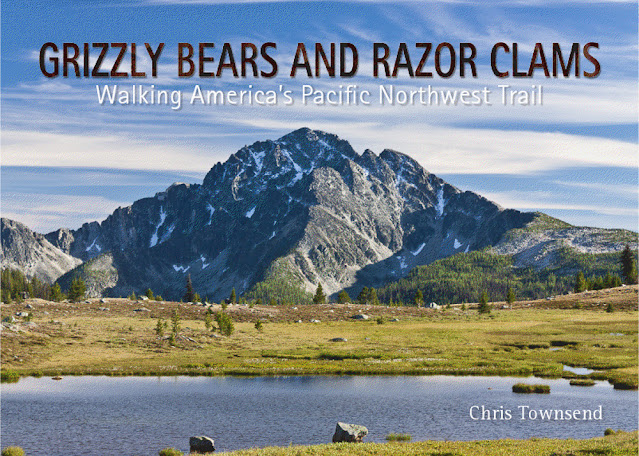 |
| The Highline Trail, Pacific Northwest Trail |
On July 27 1985 I reached Macks Inn close to the boundary of Yellowstone National Park and completed the first 815 miles of the Continental Divide Trail. It was day 59 on the trail. I posted a piece on the walk
here.
On July 27 2010 I camped by Sinclair Creek in the Whitefish Divide region after the first 118 miles of the Pacific Northwest Trail. It was day 8 on the trail.
 |
| Stahl Peak. PNT. |
At this point both trails were in the Rocky Mountains but the PNT would soon leave them on its journey east to the Pacific Ocean. The CDT of course stays in the Rockies until they fade away in northern New Mexico.
 |
| There were mosquitoes! PNT |
On the PNT the walking was becoming tougher as I'd left the prepared trails of Glacier National Park behind. It was to become much more difficult, both with the terrain and navigation. On this day I still had trails to follow. It began at a mosquito-infested site where I just slept in the inner mesh tent and finished with thunderstorms and rain. Along the way the scenery was superb and the final section on the Highline Trail wonderful.
 |
| There was rain! PNT |
On the CDT the walking was already tough, the hardest in fact of the whole walk as there was much bushwhacking and steep rocky slopes and navigation was often just continue south by the easiest way I could find. I wrote in my journal that the ten days I spent in the Beaverhead Mountains were the "toughest walking I've ever done". I did also note that the rewards were "pristine cirques ... no campsites, no trails, no fire rings, no cut trees ... immaculate scenery".
 |
| Immaculate scenery. CDT |
On the PNT I was half a day's walk from my first rest stop in the little town of Eureka. On the CDT I hadn't had a break for seventeen days when I reached Macks Inn, a small fishing resort. I needed one! In fact I took two.
Ahead the terrain on the CDT would be much easier though as I crossed Yellowstone National Park with its signed maintained trails and backcountry campsites.
 |
| Whitefish Divide scenery. PNT |
A big difference on the walks was my camera gear. 1985 was still film. I haven't yet scanned many of the thousands of images I took. I must do so! 2010 was digital. The images from that walk posted here are ones that didn't appear in my PNT book. All of those with this piece were taken on July 27.
 |
| Fire Lookout on 2205m/7235ft Mount Wam. PNT |
I 've never written a book about my CDT hike but there is a long chapter about it in my first book The Great Backpacking Adventure (long out of print). The cover of that book is of my friend Scott Steiner who accompanied me on the first 500 miles at a camp below the Chinese Wall in Montana.





















